TANK (man, medium, car)
All my working life in peacetime (from 1953 to 1990) was associated with Soviet tank building. At this time, both with us (in the Warsaw Pact countries) and our potential opponents (in NATO countries) Tanks occupied one of the main places in the weapons system of both military blocs.
As a consequence, the development of tank building in the world went rapidly, almost like during the war. Naturally, in this arms race, each side had its own achievements, its own miscalculations, and misses.
In the monograph "Tanks (tactics, equipment, economics)" * some analysis of the state of affairs in the Soviet post-war tank construction was given. Already this brief analysis led to the conclusion that there were two serious omissions in the domestic tank building.
The first is the neglect of the economy.
The second is the underestimation of the human factor in the system "man - weapon".
The monograph presents some specific examples confirming these conclusions. But over the course of my work, I have accumulated materials that make it possible to consider specific issues of tank construction both from a quantitative and a qualitative point of view. In life, all these materials were scattered. They were in various articles, reports, reports, both domestic and foreign. Moreover, the sources of receipt of materials were completely different, but they also came to me at different times (sometimes with an interval of several years). So, without further ado, I kept my notes from 1967 onwards.
Many of the materials in these records have not lost their relevance in our days. As a result, the idea was born to try to systematize the available data and publish them in the form of a monograph as reference material, as “information for thought”.
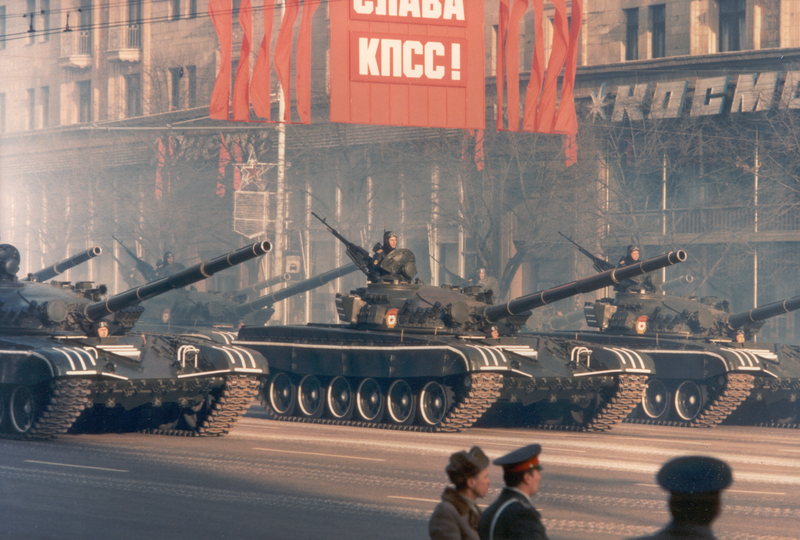
It should be noted that over the past 25 - 30 years, science and technology have developed particularly intensively, and a person has not undergone fundamental changes in his physical and psychological characteristics from the point of view of the possibility of his activity in a tank.
True, Russia should make a reservation. As a result of the “perestroika”, the physical and moral-psychological level of preparation of the contingent of possible future tank crews has sharply decreased. The level of general education has also fallen (there are cases when first-year students in higher educational institutions do not know the multiplication tables). In this regard, for domestic tank building, the issues of optimizing communications in the "man-medium-machine" system are particularly acute.
1. LITTLE GENERAL QUESTIONS
In order to avoid discrepancies, we make a reservation right away that the tank’s combat characteristics and the tank’s combat effectiveness are different concepts.
The combat characteristics are the technical characteristics of the armament and tank control systems, protection systems, characteristics of its propulsion system, transmission and running gear, which are provided on condition that the tank crew perfectly knows how to work with these systems, that all systems correctly and fully maintained and in good condition.
Combat effectiveness is a complex concept characterizing the ability of a tank to perform a combat mission. First of all, this includes the tank itself with its combat characteristics, the crew of the tank, taking into account the degree of its combat and technical training (including crew coordination). And this concept necessarily includes maintenance and logistics systems, including their effectiveness, taking into account the professionalism of their personnel.
And now we’ll take it as an axiom: if we have several models of tanks with the same combat characteristics, then that model, the design of which provides the crew with maximum comfort when working in combat conditions, has potentially the greatest combat effectiveness.
I wrote alongside the words "tank" and "comfort" and thought about it involuntarily. The reader will probably grin at such a phrase. But let's not rush to conclusions, let's see what the engineers I. D. Kudrin, B. M. Borisov, and M. N. Tikhonov wrote in 1988 in the WBT and 8 trade journal. Their article was entitled "The Impact of habitability on the combat effectiveness of the GMG." I will give excerpts from this work:
"... an increase in the human response time to 0,1 seconds (which is checked only by fine physiological research) leads to an increase in the probability of an accident in drivers by 10%. Such situations can arise, for example, with an increase in carbon monoxide concentration in the air to 0,1 mg / l (the upper limit of the norm) or at air temperature 28 ... 30 'С, i.e., in quite ordinary and, moreover, typical working conditions of the driver.
... Shooting all types of BMP weapons after 60 seconds in sealed conditions can lead to 50% personnel poisoning.
... The air temperature inside the tank does not correspond to the norm in summer when the outside air temperature is above + 19'С, in winter - at a temperature below - 20'С. At the same time, high air temperatures in habitable compartments are aggravated by increased humidity reaching 72 ... 100%.
... The specific working conditions of tankers lead to an increase in the level of colds, injuries, diseases of the skin and eyes, to nephritis and cystitis, to diseases of the cardiovascular system, to frostbite. This affects the combat effectiveness of weapons. In particular, the potential capabilities of artillery guns are underutilized to 40%, individual types of air defense missiles in difficult combat conditions - on 20 ... 30, tanks - on 30 ... 50%.
... In order to have a significant impact on the design of man-environment-machine systems, it is necessary to use methods of quantitative forecasting of crew working capacity during the combat operation of equipment.
... It is about designing operator activity as an integrated system with the subsequent development of technical means, and not about the traditional adaptation of man and machine to each other ... "
And here is another excerpt from another work. In 1989, the year D.S. Ibragimov published the documentary story "Confrontation". In it, he reports the following:
"... Twice Hero of the Soviet Union, Colonel-General of Tank Forces Vasily Sergeevich Arkhipov, who spent two wars in the tank, in his memoirs" Time of Tank Attacks "emphasizes the dependence of the success of the battle on the training of tank crews ...
Here is what he writes:
"12 - 16 hours in the roaring tank, in the heat and stuffiness, where the air is saturated with powder gas and vapor of the combustible mixture, tire and the most enduring.
Once our doctors conducted an experiment - weighed alternately 40 tankers before and after the 12 hour battle. It turned out that during that time tank commanders lost an average of 2,4 kg, gunners - 2,2 kg, radio operators - 1,8 kg. Most of all, driver mechanics (2,8 kg) and charging (kg 3,1).
Therefore, at the stops, people fell asleep instantly ... "
I think that what has been said is enough to understand why it is necessary today, solving tank construction issues, to decide on a scientific and technical level and comfort issues in a tank, and also in other combat vehicles
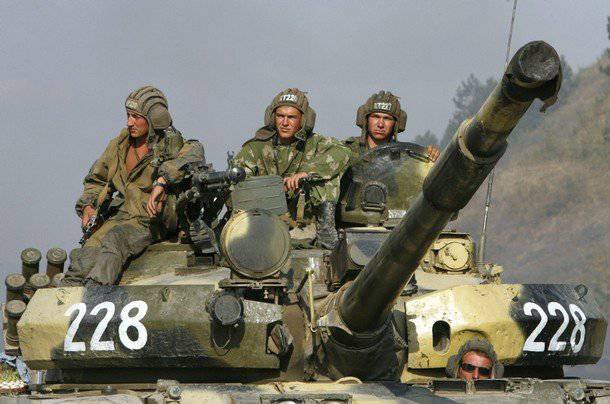
2. WHAT AND HOW WE SEE FROM THE TANK
Traditionally, the point of view that the main combat components of a tank: fire, defense and maneuver took root in tank building. Initially, in the tank schools of different states there were disputes about what to prefer: weapons, armor or motor. T-34 (tank M.I. Koshkin and A.A. Morozov) proved to the whole world that all three named components in the tank are equivalent.
But today I would introduce another component and put it in the first place - REVIEW.
Let's consider the tasks and nature of the crew’s actions on the battlefield only for a single tank (in a platoon, company, battalion this will be much more difficult).
Suppose the crew received a clear combat mission, the maximum possible intelligence about the enemy and began to perform the combat mission.
Once on the battlefield, the crew:
firstly, he must see with his own eyes the concrete situation;
secondly, he must assess the situation and decide on the specific fighting of his tank at the moment;
thirdly, maximally using the combat characteristics of your tank, apply them in the fight against the enemy;
fourthly, to make sure with your own eyes that this task has been accomplished, and only after that proceed to the next military actions.
From what has been said it is not difficult to see that if sufficient attention is not paid to the issue of visibility in a particular tank, the concept of "fire, maneuver and protection" loses its dominant significance.
In this regard, one of the findings of the R & D “Editorial”, performed at the Research Institute of the Ministry of Defense in 1972, is very characteristic.
It reads:
- The results of tactical exercises show that, due to the lack of timely receipt by the crew of information about targets, some tanks are put out of operation before they manage to make at least one aimed shot. For the same reason, the flow of tank company shots in an offensive is 3,5 shots / min, while the technical capabilities allow you to create a flow of shots with 30 shots / min intensity. "
It is possible to add fact from military practice to the conclusions of research.
In October 1973, the Arab-Israeli conflict occurred. The Arabs were armed only with Soviet tanks, the Israelis - American and British. During the fighting, the Arabs suffered heavy losses in tanks and lost the war. Hot on the heels to familiarize themselves with the causes of the December 1973 of the year, representatives of the State Technical Directorate General Staff L. N. Kartsev and P. I. Bazhenov left for Egypt and Syria. In Egypt was L. N. Kartsev. Here is what, in particular, is stated in his report:
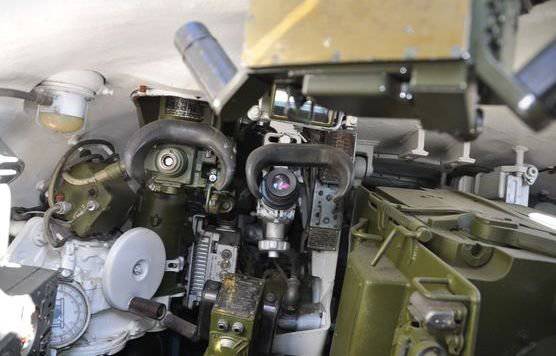
"... The 0 of the short-lived fighting — an example: The 25-th separate October 15 tank brigade struck north to join the 2 army. The tank battalion of this brigade, which was operating in the front and flank fire of the Israeli anti-tank missile system and was completely destroyed. The ATGM installations were disguised in such a way that no one saw them from the tanks during the whole battle, the tankers shot at random.
0b successful use of tanks in defense - an example: T-55 company (11 tanks) of the 21-th tank division while repelling Israeli tank attacks on the 16 infantry division, firing into the attacking flank, destroyed 25 M-60 tanks, having lost only 2 T-55. "
As you can see, the results of research and development are fully supported by facts from military practice.
But this is a qualitative side of visibility. And how to evaluate visibility from the quantitative side?
In 1972, tankers on Kubinka conducted special studies to find out the conditions for the review (observation) of objects of armored vehicles. My attention in this work was particularly attracted by one table. I will give it in full.
By increasing the average speed from 25 km / h to 35 km / h in the same conditions, the time for processing information coming from a unit of the surveyed space decreases 1,4 times ”
In this case, the distance in 1500 meters selected for the base is not accidental. In 60 - 70 - years, this distance was optimal for opening fire. In those years, the tanks still lacked rangefinder devices; Tank artillery did not yet have the accuracy, accuracy of combat and armor penetration necessary to combat small targets (such as "Tank") at long ranges.
But in this table elements of the link between visibility and the human visual abilities are objectively incorporated.
This is what V. I. Kudrin says in this article in his article “The Ergonomic Principle of Enhancing the Search Characteristics of a Tank” (VBT yu 3, 1989).
"... With a daily march with closed hatches, detection of tank-dangerous targets is reduced by 40 - 60% ...
The man is an integrator and regulator of the TTX of the tank. The human element remains the most vulnerable and least studied component of the system: up to 30,% of failures arise through the fault of the human factor ... "
However, the technique went ahead, and at the end of the 90-ies, electronic systems appeared on the basis of mathematical modeling, which made it possible to somewhat increase the search capabilities of the tank. But this is what V.I. Kudrin says about this:
"... The disadvantage of mathematical models is disregard for the identity of the operator.
... The use of mathematical methods led to a certain increase in the effectiveness of search capabilities at the expense of the "technical" link, and the search characteristics of tank crews in the search system remain "a thing in themselves."
The properties of the human component of the system are: individual psychological character, temperament, motivation, emotions;
mental: attention, memory, thinking;
visual: exposure and dynamic (with a short exposure) visual acuity, oculomotor activity, throughput of the visual analyzer;
professional: possession of technology, special techniques, knowledge of the enemy.
The complex of ofelmoergonomic properties is the trigger mechanism of the gunner’s activity, which is based on the reception of information, its processing and decision making.
At the output of the system are speed and accuracy. determine the outcome of the battle "(by me).
So in short, you can identify the relationship between objective and subjective factors in the system of "visibility".
But back to our table a little more. It takes the base 1,5 km for the base, and the maximum - 4 km. At that time, our tank sight had multiples of 3,5 and 8 and 18 'and 9' field angles, respectively. With such characteristics, it was possible to detect a target at 3,2 - 3,6 km from a standstill and 2,2 - 2,4 km on the move, but to determine a Tank ™ target at 2,5 - 3 km from a place, and only 1,7 - 1,8 km on the move.
For reference: on NATO tanks, sights had variable multiplicity from 8 "to 16" and field angles from 10 'to 3'. But it must be kept in mind that with an increase in the multiplicity the coefficient of light transmission decreases.
Speaking of the table, we draw attention to the last column, which shows the degree of change in the transparency of the atmosphere depending on the thickness of the air layer. In this case, it can be considered as a purely calculated physical indicator. But in life, the transparency of the atmosphere is a variable quantity, and it mainly depends on meteorological conditions. I remember very well that when we carried out factory and state tests of the T-54B tank with the Cyclone stabilizer in the autumn-winter period, the shooting distance on the go was on TTN 1500 - 1000 m, there was not a single case that we put off or transferred shooting the next day on the weather conditions. But when the Cobra, with a maximum range of 64 meters, was installed on the T-4000 tank and the customer demanded to check all 100% tanks in full-scale shooting for the maximum range during the first year of production, it turned out that months were completely assembled tanks ( cases - up to 2 months) were idle at the test site in anticipation of visibility of 4 km due to weather conditions (late autumn, winter, early spring).
There is something to think about.
In confirmation of all this, I will cite data from the magazine "Armee of Defense" (1989, May-June) about the French tank Leclerc. The magazine reports that 65% of the cost of the tank falls on the electronics. It is essential to note that the tank's panoramic sight costs more than the main engine (14,3% and 11,2%, respectively), the gunner's sight costs more than the main armament (5,6% and 4,1%), the computing device of the fire control system is more expensive than the turret without equipment (1,9% and 1,2% respectively).
These figures suggest that in technical terms, issues of visibility in the tank are becoming increasingly large.
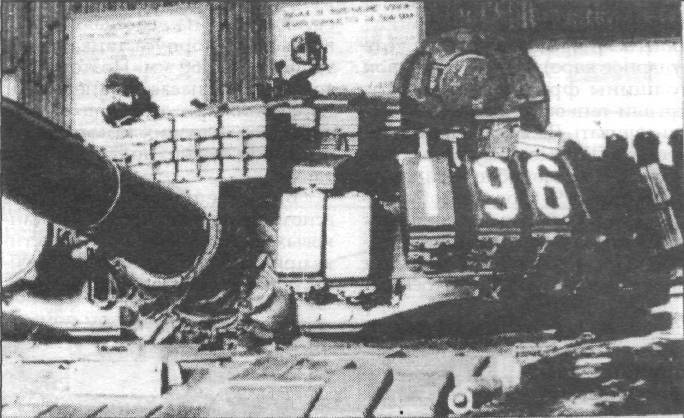
3. GUN OR ROCKET
Nikita Sergeevich Khrushchev simply decided this question quickly and categorically in his time: "Artillery is a cave technique. Give us a rocket!" It has been almost 40 years since this verdict was rendered. Missile technology firmly entered the life of the armed forces, but so far it has not been able to replace the artillery. In this case, I believe that the question: "Do I need a rocket in the tank?" - in the domestic tank building fundamentally not resolved so far. At the beginning of the 80s, when the rapid development of small-sized missile systems began, the question of what should be the armament complex of a future tank was discussed in detail and comprehensively in the tank design of the NATO countries. In order not to retell the essence of this discussion, I will cite several excerpts from the journals of that time.
This is what International Defense Review, 1972, wrote: v 5, # 1.
"In World War II, the range of tank combat ranged between 800 and 1500 and most tank battles took place at ranges from 600 to 1200. However, there were several examples when the German fighting machines Tiger-I and Tiger II opened fire on enemy tanks at a range of 3000 m, and hits usually took place from the third shot.
According to English sources, the average combat range of tanks during the war in Kashmir in 1965 was 600 - 1200 m; American General Marshall gives an average range during the Sinai campaign in 1967, equal to 900 - 1100 m. In some cases, for example, in the battles over the Golan Heights, the Israelis shot from a Centurion tank with HESH-type projectiles (high-explosive with a flattening head) from a distance of 3000 m, the enemy’s tanks were disabled at worst from the third shot after hitting the target in a fork.
As a result of studying the terrain of the Central European zone, it was found that most targets will be at distances up to 2000 m (50% of all targets - at distances up to 1000 m, 30% - between 1000 and 2000 m and 20% - over 2000 m).
A study of the terrain in the north of West Germany, undertaken by the command of the NATO armed forces, led to the conclusion that firing would be possible at the following ranges: 1000 - 3000 m for most targets, 3000 - 4000 m - for 8% targets, 4000 - 5000 m - for 4% targets and above 5000 - 5% targets.
On this basis, British and American tank experts concluded: the 3000 m range can be considered the maximum combat range of the tank and should be considered as the basis of the requirements for the future tank gun (they mentioned also about increasing the range to 4000 m).
According to the Americans, a tank that shoots first is likely to hit an enemy tank 80% higher. "
In the journal "International Defense Review", 1973, v 6, No. 6, we find in the article "The New Generation of Tanks" the following assessments of both the tanks themselves and the tank armament complexes.
"In general, tanks have never been invulnerable to enemy weapons, but they are less vulnerable and more mobile than many other combat vehicles ...
“..........”
Studies conducted at the European theater of operations (theater of military operations) have shown that the frequency of detecting and identifying targets at long ranges is relatively low, and at short distances, on the contrary, is higher. As a result, the cumulative probability of detecting and identifying targets is almost the same for both guns with advanced fire control and missiles. If we consider the effectiveness of weapons in terms of the probability of hitting, then there is little choice between the two forms of tank weapons.
In any case, the probability of hitting is not the only criterion by which to judge the effectiveness of weapons systems. The tank must be destroyed in the shortest possible time in order to shorten the duration of the enemy’s retaliatory strike.
“..........”
... the range at which the time of destruction of the ATGM becomes less than the time of destruction by the cannon exceeds the range at which the probability of the destruction of the ATGM becomes higher than that of the cannon. This fact, combined with a change in the probability of detecting and identifying a target depending on the range, leads to the conclusion that, on average, the gun exceeds the ATGM on the European and many other theater engines (I emphasized).
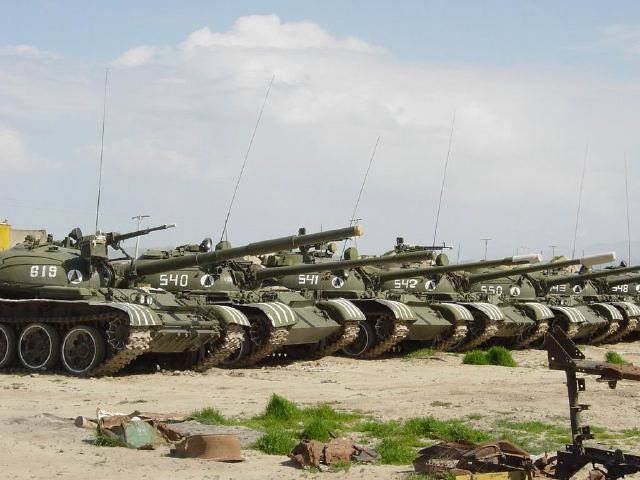
“..........”
The difference in the rate of fire also calls into question the general method of assessing the relative effectiveness of cannons and ATGMs, which is based on the probability of being hit with a single shot. There is no doubt that it is possible to make two or three shots from a cannon in the time it takes for one shot of an ATGM. Since the cost of a second-generation guided projectile (with an automatic command control system — Yu. K.) is approximately 20 times the cost of a tank cannon projectile, this will also have an impact on the economic efficiency of the cannon systems (I emphasized). ”
I tried to present the main arguments of NATO military experts in a comparative assessment of the artillery and rocket armament of a tank. In this connection, probably, it is necessary to say how such an analysis was carried out with us. I remember how, in 1962, I, as a representative of VNIITransmash, was present at the consideration of the technical project "Object 287" (a missile tank developed by KB LKZ). The review took place in the GBTU on the section of the NTS. After the lead designer finished his report, questions began. Raised his hand Colonel from Grau. He was given the word.
- I have a question for the speaker. The rocket is more effective than an artillery shell at ranges of 3 - 4 km. There is evidence that in Central Europe, where NATO and SVD troops are concentrated, the terrain at distances of 3 - 4 km allows the detection of all 5 - 6% targets. Has the issue of using such a massive, expensive and complex weapon as a tank been considered to perform such limited tasks?
- I am shooting this question! - shouted a shout from the audience. - And you, Colonel, leave the hall!
Everyone looked back at this command replica. She was filed by Colonel-General, who, apparently, entered the hall already during the report. As it turned out, the colonel general represented the General Staff on the NTS. His command, the instruction was carried out strictly. After that, only technical issues were discussed in the section.
In addition, other cases of discussing the issue of "gun or rocket" in the practice of domestic tank building or in the domestic press, I do not know.
As a result, on the main battle tanks of NATO, the weapons remained cannon-like, with us it became missile-gun. Theoretically, at first glance, in terms of tactics, our tanks have become more effective: "if you want, shoot cannons with artillery shells, if you want - with a rocket."
We can only agree with this theoretically. Reasoning this way, we take into account only the combat characteristics of the weapon and forget about the concept of “combat effectiveness". I have already referred to V.I. Kudrin (VBT, 1989 g., No. 3). Considering the issues of ergonomics, he rightly asserts: "Man is an integrator and the TTX regulator of the tank. "Let's try to understand what it is in our particular case.
In the performance characteristics of the guided weapons complex it is recorded that at a range of 4000 m the rocket hits the target with a probability of 98 - 99%. How is this checked? An experienced tank is installed in a combat position. At a distance of 4000, a target tank is installed from it so that it is well (completely) visible, so that the terrain does not create obstacles to the rocket’s flight path, and in good weather they fire a missile. While the rocket overcomes the distance to the target, the shooter-operator with the help of the control panel keeps for several seconds the sighting mark of the control device on the target.
Theoretically, in these seconds, the operator can smoke a cigar and drink coffee. In any case, if this is a professional, then he can only worry about the qualitative performance of duties. If the first or second missiles hit the target, then its task is completed.
Now imagine a real combat situation. On the experience of fighting tanks and aviation in the war in the Middle East in October 1973, Military Equipment and Economics (Org. 2), 1974 No. 9 reported: “During the last war in the Middle East, there was a widespread and massive use of tanks, in which both sides suffered large losses: from anti-tank infantry weapons - 50%; in tank battles - 30%; from aviation and anti-tank mines - 20%. Most of the tanks were hit by anti-tank weapons at a distance of 2,5 - 3 km .... ". In this situation, our operator-shooter, together with his missile tank, turns into target number 1 for all enemy anti-tank weapons. As combat experience shows, in Under such conditions, much changes.
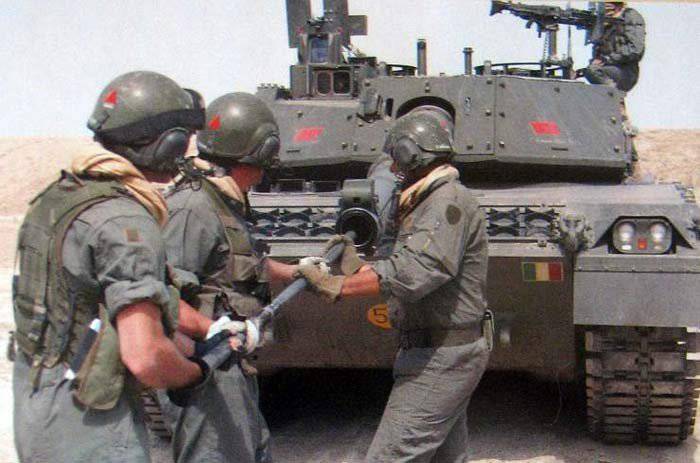
-Experience of the Second World War showed that the probability of hitting in battle decreases very much compared to the probability of hitting obtained in peacetime at the test site. For 88-mm guns of the PACK 43 with a target size of 2,5х2 m and remoteness of 1500 m, the probability of hitting in peacetime was 77%, and in wartime only 33%. "
As you can see, in battle, the "greenhouse" probability of hitting a target is halved.
From the above we can make a certain conclusion: "Weapon samples cannot be compared only by combat characteristics. It is necessary to learn how to determine their combat effectiveness and make a final choice based on it."
And now we will look at this problem from the other side. The political leaders of NATO countries openly declared that the arms race, which they unleashed during the cold war, was not a “goal” of war, but a “means.” The arms race was intended to bleed the economy of the countries of the socialist camp. the assessment of new types of weapons should be the principle of "cost - efficiency", because the main front of the struggle in the "cold war" has moved from the field of hostilities to the economy.
What have we got from the point of view of the economy, having developed, adopted and launched a missile-tank tank in serial production? In the fourth year of mass production, the T-64A cannon tank cost 194 thousand rubles, the T-64B missile-gun tank cost 318 thousand rubles. The cost of the tank itself increased by 114 thousand rubles, or 60%, and its combat effectiveness compared to the tank of the conditional enemy increased by 3 - 4%. At the same time, we still do not take into account that the cost of a rocket shot has increased tenfold compared with an artillery shot. As a result, the gunners were trained to fire rockets from the tank with the help of electronic simulators, and in order to save the missiles a full-scale shot of a combat missile fell on average to one out of ten students. ” But this, too, must be taken into account when we evaluate combat effectiveness.
The issues covered in this section are of particular relevance. As experience shows, in tank building, weapons systems and control systems develop most dynamically, and these systems significantly influence the combat effectiveness of a tank. And although they say the cold war is over, the economic uncertainty in Russia puts the economic component in assessing the combat effectiveness of any constructive innovations with even greater urgency than during the cold war.
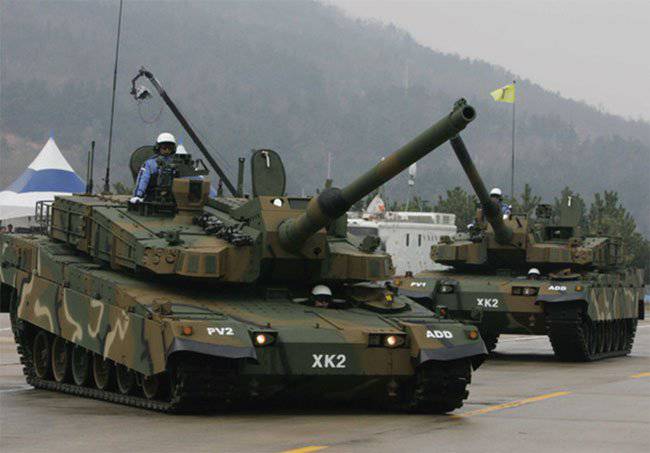
4. CREW
Today, the dictionary defines the word "crew" as a team, tank personnel. During the Great Patriotic War, the German tanks T-III, T-IV, T-V, T-VI and T-VIB ("royal tiger") all had a crew of 5 people. The position of the Germans in this matter was clear. There was no clarity in the domestic tank building. The medium tank T-34-76 had a crew of 4 man. Since January, the T-1944-34 began to be produced 85, its crew has been increased to 5 people.
Heavy KV tanks had a crew of 5 people, and since the 1943, the IS tank began to be produced, its crew was reduced to 4 people. Moreover, there was no fundamentally functional difference in the duties of the crew members of either tank.
Let us try to trace and evaluate the evolution of views on the crew of the tank specifically on the example of domestic medium tanks T-34, T-54 and T-64. In practice, these were the main tanks of the Soviet Army.
T-34-76. Crew 4 man: the commander of the tank - he gunner guns; driver mechanic; charging; shooter radio operator. Of the 4 crew members, the 3-e had twin functions: gunner-commander, driver-mechanic, and radio operator-gunner. A person could combine these functions as a specialty, but a person could not fully and simultaneously perform both mentally and physically. But if the driver could stop the tank and deal with the elimination of mechanical damage (if it was in his power), if the radio operator at the request of his commander could stop firing on manpower with a machine gun (at that time the infantry did not have its own anti-tank weapons) and start working on the radio, the tank commander, finding an enemy tank or anti-tank gun, was obliged to immediately open artillery fire, seeking to defeat the target. At the time of the duel, the tank itself turned out to be without a commander, since at that time the commander turned into a gunner by 100%. Well even if it was a linear tank. And if it was a tank of a platoon commander, company or battalion, then without a commander, the entire unit would be in combat. Here is how it is said about this in Stalin's order No. 325 of 16 of October 1942 of the year:
"... Commanders of companies and battalions, moving ahead of the battle formations, do not have the ability to monitor the tanks and control the combat of their units and turn into ordinary tank commanders, while the units, having no control, lose their orientation and wander around the battlefield, bearing in vain losses ... "At that time, our tank losses were not measured in dozens, not hundreds, but thousands. As we see, this question reached the Commander-in-Chief of the Red Army not by chance.
T-34-85. The crew of the 5 man: tank commander, driver, gunner, loader, radio operator. In this embodiment, the situation with the commander has fundamentally changed for the better. In this version, T-34 participated in the victorious, final stage of the Great Patriotic War.
T-54. Adopted in 1946 year. The crew of the 4 man: the tank commander is the radio operator; driver mechanic; gunner guns; loader - he's an anti-aircraft machine gun. In this embodiment, the situation with the commander at first glance seems normal. But this is only as long as we have not figured out: what does radio communication mean in time for a unit commander in battle?
Here is what E. A. Morozov wrote in 1980 in his article “The Problem of Reducing the Number of Crews of the Main Tank” (VBT, No. 6):
"... There are approximately as many controls in a modern tank as on a spacecraft (more than 200). Of these, the commander has 40%, so he cannot successfully control his tank and subunit at the same time. Total information of the battalion commander 420 messages: of which 33% is superior, 22% with subordinates and 44% with interacting units. Information exchange takes up to 8 hours (2 - 5 minutes per session), or 50% at 15-hour working day. "
To this we must add that in addition to working on the radio, she still needed to be watched, she still had to be serviced.
It is hardly worth in this case to shift on the shoulders of the commander also the care of maintaining radio communications. Of course, this reduced the combat effectiveness of the tank.
T-64. Adopted in 1966 year. The crew of 3 man: the commander of the tank-radio operator, he is the shooter from the anti-aircraft machine gun; driver mechanic; gunner guns - later it is the operator ATGM. The design of the tank used the mechanism of loading the gun (MH), which loads the gun with both artillery and rocket shots. But if the power part of the loader's work was now carried out by the mechanism, then the functions of controlling this mechanism and its maintenance fell on the gunner's gunner.
With such a regular crew structure, it is difficult to talk about the growth of the combat effectiveness of the T-64, although its combat characteristics were, according to the estimates of domestic specialists (and military personnel), the highest in the world tank design. And objectively, we can agree with that (in the combat characteristics, we consider only the quantitative, and not the qualitative composition of the crew).
All of the above applies to the tank and its crew in battle. But most of the time, the tank is out of the battlefield, where it temporarily turns into a combat vehicle that needs to be cleaned, lubricated, filled with fuel, replenished its ammunition, restored chassis (replacing worn or damaged track rollers and tracks of tracks), washed out clogged air cleaners, clean and lubricate weapons. Here, the edges of specialization between tankers are erased, and they simply turn into "the crew of a combat vehicle." Here, in order to replace the track track or clean the 125-mm cannon, you need a minimum of 3 man. This is physically very heavy and dirty (in the literal sense of the word) Job.
E. A. Morozov, thinking about how to reduce the crew of the tank to 2-x people, spent time on the T-64 (crew of the 3 person) and received the following data:
So, 9 hours of continuous physically hard work, after which it is necessary to give people the opportunity to minimally wash, eat, rest and gain strength for the next combat operation.
Here I can be reproached that I pay too much attention to maintenance issues. It can be said that during the war the T-34 crew was not easy, but he did cope with his duties and the T-34 had the highest combat effectiveness. It can be said that the post-war domestic tanks sharply increased the combat characteristics due to the introduction of stabilization of weapons, the introduction of rangefinders, the introduction of the MOH and, finally, due to the introduction of missile weapons.
And how, with all this, we have changed the working conditions of a person in battle? We forgot that "Man is an integrator and regulator of the TTX tank."
Here is what the NII-2 "0" Deduction Research Results Report (February 18 in February) says about this issue:
"- If we take the load on the operator T-34 per unit, then in T-55 and T-62 it increased by 60%, in T-64 by 70%, in IT 1 by 270%."
And in the same report:
"- The increase in the number of operations and their complication increase the number of tank armament failures arising due to the crew’s fault (in T-55 - 32%, in T-62 - 64%). At the same time, the technical reliability of T-62 is higher than T- 55: for technical failures T-62 - 35%; for T-55 - 68%.
The incomplete reliability of tanks reduces their effectiveness by 16%. "
You can cite more examples of how, in pursuit of high combat characteristics in the domestic tank building, due to the gross neglect of the human factor, the combat effectiveness of tanks was simultaneously reduced.
I will give one more example, which, in my opinion, is of fundamental importance for tank forces. This is an order of the Great Patriotic War. It is short, I will bring it in full.
on the appointment of commanders for medium and heavy tanks
No. 0400 9 October 1941
To improve the combat capability of the tank forces, to better use them in combat with other branches of the military, to appoint:
1. As commanders of medium tanks * junior lieutenants and lieutenants.
2. As commanders of platoon medium tanks * senior lieutenants.
3. As commanders of companies mouth KV - captains - majors.
4. As commander, the company of medium tanks * - captains.
5. As commanders of battalions of heavy and medium tanks * - majors, lieutenant colonels.
The head of the financial management of the Red Army to make appropriate changes to the salaries of the content.
* The words “medium tanks” are entered by I. Stapin in red pencil instead of “T-34 tanks”.
People's Commissar of Defense
J. Stalin
This order is an example of how the bloody war taught our Supreme High Command to understand the significance of the human factor in armored vehicles and the importance of man in increasing the combat effectiveness of a tank.
But the war was over, and her lessons began to be forgotten. New post-war tanks were becoming more and more difficult technically. So, if in serial production 1 January 1946, the complexity of the T-34 was 3203 standard hours, then the complexity of the T-55 (on 1 January 1968) was 5723 standard hours, the complexity of the T-62 (on 1 January 1968 g .) was 5855 standard hours and the complexity of the T-64 (on 1 January 1968 g.) was 22564 standard hours. At the same time, compared with the T-34, the crew of the T-55 and T-62 was less per person (4 man instead of 5 on T-34) and, which had a particularly negative impact on the combat effectiveness of these tanks, the position of officer commander of the tank was transferred back to the rank of sergeant. On T-64, the crew was reduced to 3 in general, while the position of deputy engineer of the company was abolished in the tank units and the position of political officer was introduced to the vacant place in the staffing list. As a result, the future tank commander held combat training for half a year in training units along with the rest of the crew. 0 consequences of such decisions of tankers VNIItransmash in 1988 year in its report on the research "Study of the main directions of development of the TCB to armored technology" (code "Content-3") wrote:
"... on the one hand, the constant qualitative renewal of equipment and the short service life of mass contingents of personnel, on the other, significantly complicate the tasks of combat training.
The peculiarities of the process of training soldiers and junior commanders is that within six months of yesterday's schoolchildren, who often have little knowledge of Russian, in training units it is required to train warriors who own modern weapons.
".........."
According to psychologists, the level of organization and technical equipment of the educational process in educational units ... are significantly lagging behind the level of complexity of the studied objects. According to the generalization of the survey results of graduates of the training center, they are prepared for the operation of facilities at best on 30 - 40% (I emphasized), ready only for the most superficial operation of it, without a detailed knowledge of its systems and complexes. "
The data of the research carried out confirm:
"... that the combat effectiveness of the tank may vary by an order of magnitude depending on the level of training and crew training."
In conclusion:
"Considering the low rates of resource consumption and ammunition, due to their high cost, the number of crew training on combat training machines for 2 service years is so small that it does not ensure the formation and consolidation of sustainable combat work skills, and the crew’s average performance does not exceed 60% "(underlined by me).
Summarizing all the above, we can draw the following conclusions:
1. It is advisable to have the crew of a 4-man: a tank commander (he is a platoon commander, or a company, or a battalion), gunner operator, driver-mechanic, loading.
2. In the design of the tank, it is advisable to have a loading mechanism. In this case, the functions of the loader should include the management and maintenance of the loading mechanism, work on the radio, and firing from an anti-aircraft machine gun.
3. The tank commander should be an officer with a secondary military technical education.
4. The level of combat and technical training of the crew must ensure the implementation of at least 90% of the combat qualities of the vehicle in conditions as close as possible to the combat situation.
The latter requirement is most fully possible in the transition to a professional army. With the draft contingent to implement the item 4 will be much more difficult and, most importantly, after demobilization, in civilian life, a person will quickly lose the specific skills and knowledge of the tanker and, therefore, in the case of mobilization will be professionally unsuitable for effective use in a modern tank.
Fundamental issues related to the crew of the tank, require a radical solution.
To send a modern complex machine into battle, knowing in advance that its crew does not have the necessary knowledge and skills to control it, means to consciously condemn both equipment and people to death.
5. MECHANIC DRIVER AND TANK
In the crew of the tank there is one person who is connected with the machine (tank) both physically and organically. This is the last form of communication, we almost never think about it, but it has a very serious meaning for a machine like a tank. I did not even think about it, although I myself had the right to drive a car and a motorcycle, I had some practice of driving T-34 and T-54. My attention to this issue attracted the case. If memory serves, it happened in the 1970 year. Somehow they called me from the BTV Academy and were invited to come to them and watch the mechanic's driver’s simulator, developed by a group of specialists and young officers adjunct to the academy. What I saw exceeded all my expectations. In a huge box on a concrete foundation extending 4 meters deep into the earth, a full-size metal mock-up of the tank's bow was mounted. Inside the model was completely from serial units and parts mounted workplace mechanic T-54. In the horizontal plane, the model was mounted on two powerful hinges and could swing in a vertical plane around the calculated center of gravity of the simulated tank. Swing was carried out using powerful hydraulic cylinders. Behind the layout was built a platform with a special film installation. Ahead was a movie screen. On the one side of the layout was an appropriately equipped instructor cabin, on the other - cabinets with control equipment. Communication between the student and the instructor was carried out using a tank intercom. Power supply was connected. In general, the booth was a complex construction and engineering construction.
The developers of the stand faced serious questions in the field of cinema. Here, in sync with the species image of the tank track, it was necessary to record geometrically precisely both its profile and more to do, which was not the case in ordinary cinema.
I will not go into details, I note only that, in addition to imitating the real physical exertion on the working bodies used by the driver, the work of the stand was accompanied by an imitation of real noise that took place in the conditions of the tank.
What he saw evoked a feeling of deep respect for the specialists who managed to create such a stand, and testified to the serious material capabilities of the BTV Academy at that time. Tankmen was something to be proud of. There was no doubt that such a stand would be able to drastically improve the training of driver mechanics and drastically reduce the consumption of motor life of tanks in a combat training fleet. It was necessary to take measures to organize work on the stands in the industry. At that time, the deputy in charge of armored vehicles at the Ministry of Defense Industry was Minister Joseph Yakovlevich Kotin.
I called him. Kotin did not have to explain much, he understood everything and accepted for execution at once, without demanding any official instructions. The ministry issued an order that the Murom plant was instructed to create a design bureau for tank simulators and production facilities for the production of such simulators. What was subsequently performed.
But the main thing for which I remembered all this history, happened after I finished getting acquainted with the stand. One of the participants in the demonstration of the work of the stand approached me, introduced himself as an associate of the Academy and told the following. They (the creators of the stand) came to the conclusion that, in addition to the fact that the stand is a simulator for developing certain machine control skills in humans, it is also a device that allows quantitative research of organic bonds arising between man and machine in the process of their joint work. Instruments were connected to the control system of the stand, which, with an accuracy of a fraction of a second, made it possible to measure the disturbing video information that appeared on the silver screen, the reaction time of a person to it, and the response time of the corresponding mechanisms. On the basis of these data, tests and standards were developed for evaluating their performance on the simulator with grades according to the 5-scale. From Kubinka, they invited a group of young soldiers who were trained there as drivers, and tested them at the stand. Those who received ratings "5", "4" and "3" were allowed to work. Losers were not allowed to work at the stand, since one of them received a serious spinal injury there. After training at the stand, 0 was returned to Kubinka, where they continued their studies in real tanks of the combat training fleet. At the end of their studies, all the soldiers who showed poor results on the stand (“3” score), without any training, were unable to get a higher rating than driving.
Even before this adjunct information, I understood how important human fitness and experience are for proper and proper machine control. But only now I thought about the fact that with the increase in the mass of the tank and the growth of its dynamics, the accuracy and speed of the action of the driver is of particular importance.
Today's tanks, having a mass of more than 50 tons and developing a speed of more than 70 km / h, require a person to perform operations to control such a machine in just a matter of a split second. But not everyone is capable of it, which was confirmed by the experience of the BTV Academy.
Yes, and in life we observe that one person, if he sees a falling sandwich, will catch it on the fly; the other will only move when the sandwich is on the floor.
Today, when I hear reports of accidents on the roads and report that the car "BMV" collided with the car "Ford", because the driver did not cope with the controls, I understand that the person who took to drive the car "BMV”, by nature had speed response, which did not match the dynamic parameters of the machine "BMV", such a person could not be given the right to operate just such a machine.
Apparently, it is time to introduce the appropriate attestation for candidates selected for tank mechanics.
In principle, tankers have long been forced to pay attention to the operational characteristics of the tank, depending on the state of the driver. So, in the 1975 year, the journal of VBT, No. 2 in the article "The influence of the time of the driver's visual-motor reaction on the quality of tank control" wrote:
"... T-64А two-day march in winter conditions, as a result of fatigue, the idle time of the tempo-motor reaction increased by the end of the first day by 38%, by the end of the second by 64% (0,87 s, 1,13 and 1,44 s, respectively). С Considering this, the allowable distance for 30 km / h (8,3 m / s) - 30 m; 35 km / h (9,7 m / s) - 50 m; 40 km / h (11,1 m / s) - 75 m and at 50 km / hour (13,8 m / s) - 150 m ";
In the same year, 1975, in the journal VBT, No. 4, G. I. Golovachev in the article "0 modeling the process of movement of tank columns" gave the following data:
"... As experience shows, an increase in the speed of movement of single tanks does not increase the speed of movement of the columns."
And gave the schedule:
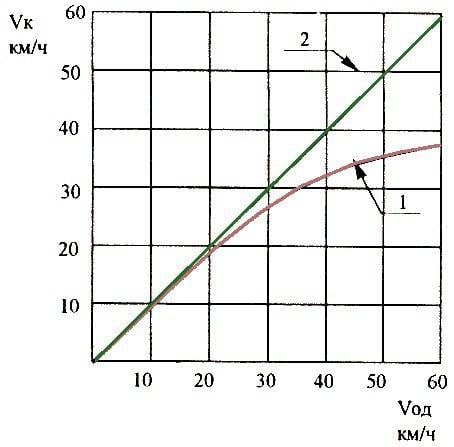
And further. In the WBT journal, No. 2 for 1978, the year F. P. Shpak in the article “Influence of the processes“ deceleration - acceleration ”on the mobility of the SHM when making a march” gives data that with the growth of the specific power from 10 to 20 hp / t Vsr grows by 80%; from 20 to 30 hp / t - grows on 10 - 12%.
It is easy to see that in all these cases, the purely technical, at first glance, parameters directly depend on the “idle time of the visual-motor reaction” (as written by the WBT, 2 number for 1975 year) of a person. And if in the future we want to further increase the value of these parameters, then we need to study more deeply and seriously the possibilities of a person and try to use them wiser.
Unfortunately, to this day our military tank experts and tank builders talk about the dynamic capabilities of the vehicle only from the technical point of view, showing either illiteracy in the dependence of the tank dynamics on human capabilities, or inexcusably neglecting the human factor in general.
Today, the whole world has been bypassed by a photograph of a “flying” domestic T-90 tank. When I look at it, the question involuntarily arises:
-How is it more correct to say: "T-90 tank driver" or "T-90 tank driver"?
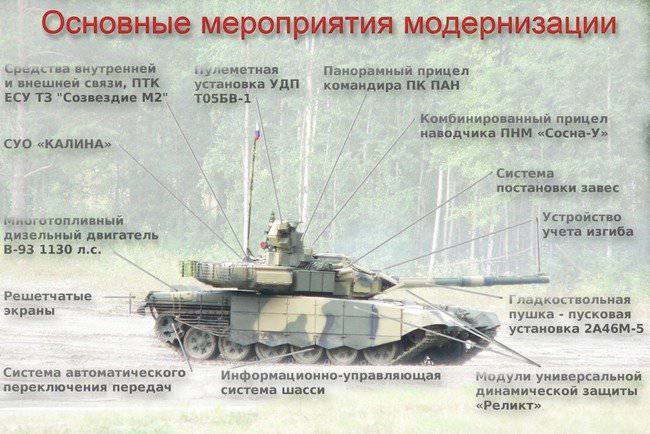
6. TANK CARE
To send a tank with a crew into battle that is able to use the combat characteristics of the vehicle only on 50%, or send a qualified crew to the battle on a tank that, due to its technical condition, can provide only 50% of combat performance incorporated into its design, it is equally criminal. Therefore, in peacetime, the service of combat training of personnel and the service of maintaining the technical readiness of combat vehicles must be structured in such a way as to ensure maximum combat readiness of both of them (in war, all the more). We have already seen that the tank training service in the Soviet Army was unsatisfactory. The same can be said about the logistics service.
This is what V.P. Novikov, V.P. Sokolov, and A.S. Shumilov reported in the article ™ Regulatory and actual costs of operating BTT (VBT, No. 2, 1991):
"... according to the data obtained during military operations under control in parts of a number of military districts (Leningradsky, Kiev and others), the actual total average annual operating costs of T-72А and T-80Б increased by 3 and 4, respectively, compared to the costs for operation of the T-55 tank.
... the actual costs of an average repair on 25 - 40% less, and on the current - on 70 - 80% more than the corresponding standard costs.
The reasons:
1) failure to fully implement the average repair (deficiencies in the planning of supplying repair bodies with spare parts and materials), which leads to an increase in the number of failures and an increase in the number of current repairs for this reason;
2) increases the proportion of complex failures on samples that have a complex structure (in T-64A, the complexity coefficient 0,79, and in T-80B it is 0,86);
3) violation of the rules and modes of operation of samples (insufficient crew preparation and complication of the sample design). "
Yu. K. Gusev, T. V. Picturno and A. S. Razvalov in the article “Improving the efficiency of the tank maintenance system” (VBT, No. 2, 1988):
"An analysis of the nomenclature of failures of serial tanks showed that 30 - 40% of them could have been warned with a rational organization of maintenance.
The equality of the component losses in the total idle time for maintenance (i.e. the equality of the duration of the actual work of the ETO and the time of concomitant repair) comes for T-80B through 100 km, T-64B - 200 km, and for T-72B - 350 km. "
The latter conclusion is of interest for evaluating the design of the tank in terms of operation. As you can see, tagilchane on this parameter surpassed the Leningrad residents in 3,5 times and Kharkov citizens - in 1,75 times.
It should also be noted that in the NATO countries, the maintenance of technical alertness of tanks has received much more attention. It is characteristic that when considering the problem of the size of the main battle tank, the questions of material and technical services by military specialists are practically put in the first place.
This is what Armor magazine, 4 number for 1988, wrote about this in the article "Some Considerations Concerning the Reduction of a Tank Crew":
"In the Western press, an increasing opinion is expressed about the possibility of reducing the crew of a tank. The reason for this is the success achieved in the field of technology and especially in the development of an automatic loader.
The United States, England, France and West Germany are currently exploring the possibility of reducing the tank crew. Preliminary results of a comparison of crews of four and three led to the following conclusions:
- A crew of three people using additional equipment and with other crew accommodation inside can provide system operation during 72 hours of combat, and the level of combat effectiveness of the tank will not differ significantly from the level of combat effectiveness of a tank with a crew of four.
- In addition to the automatic charging device, other equipment will also be needed to ensure that the crew of three people can perform the same maintenance on the machine as the crew of four people.
- During logistics operations, it is not enough for three crew members (emphasized by me).
- Tanks with a crew of three people are generally more sensitive to combat stress, less able to make up for losses and have a greater load in case of damage to the tank compared to tanks, where the crew of four people. This is especially felt during long operations.
The issue of reducing the crew of the tank should be considered in all aspects, and especially in the aspects of combat effectiveness, saving human resources and saving cost. Preference is given to consideration of the impact of crew reduction on its combat effectiveness. A reduction in combat effectiveness is unacceptable (emphasized by me).
".........."
The decision to reduce the number of crew members is not an easy decision, and it should not be tied directly to the possibility of using an automatic charger.
To reduce the number of crew members, it is necessary to carry out improvements on the tank, which will certainly lead to problems in maintenance, security and logistics. "
In the domestic tank building, maintenance issues were fully within the competence of the military, therefore, at the design and creation of new models, the designers almost fell out of sight. In this regard, it seems appropriate in the development of TTT for the creation of new models to introduce a special section "Maintaining technical readiness" and for the beginning to consider the requirements of this section optional. Such an order will force both the customer and the developer to work out in advance and more deeply the question that is of fundamental importance for the combat effectiveness of the tank.
CONCLUSION
The purpose of this work is to draw the attention of tankers and tank builders to the problems that were traditionally considered secondary in domestic tank design, but in fact they actually directly influenced the tank’s combat effectiveness.
The apparent prescription of the materials cited in the work today may affect individual numerical values, but not the fundamental essence of the problems raised.
This work is information for consideration.
And further. I have in my hands the book "Naval commander" - materials about the life and work of the Admiral Fleet Soviet Union Nikolai Gerasimovich Kuznetsov. The book contains the statements of N. G. Kuznetsov from manuscripts of works, notebooks and books. I will give three of his statements:
1. "Military people have no right to be caught unawares. No matter how unexpected this or that turn of events looks, it cannot be taken by surprise, you need to be ready for it. With high readiness, suddenness loses strength."
2. "High organization is the key to victory."
3. "I wrote books so that conclusions could be drawn."
These words contain the essence and meaning of this and all my previous books.
March - September 2000
Moscow
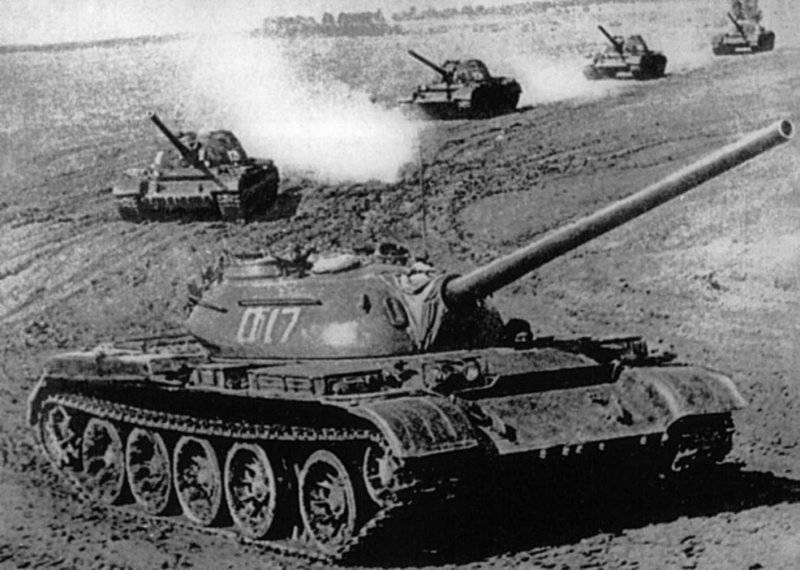
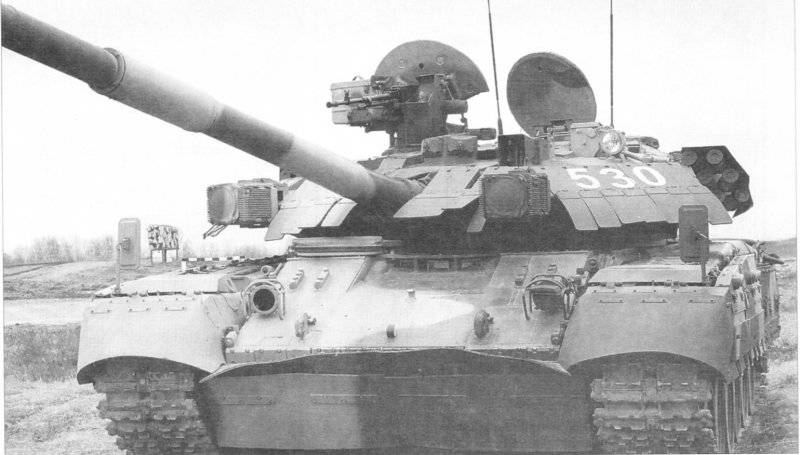

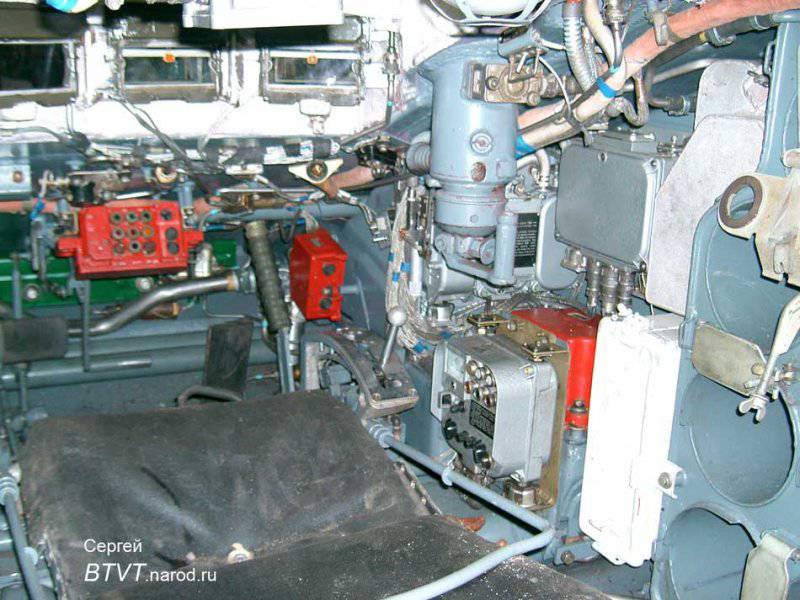
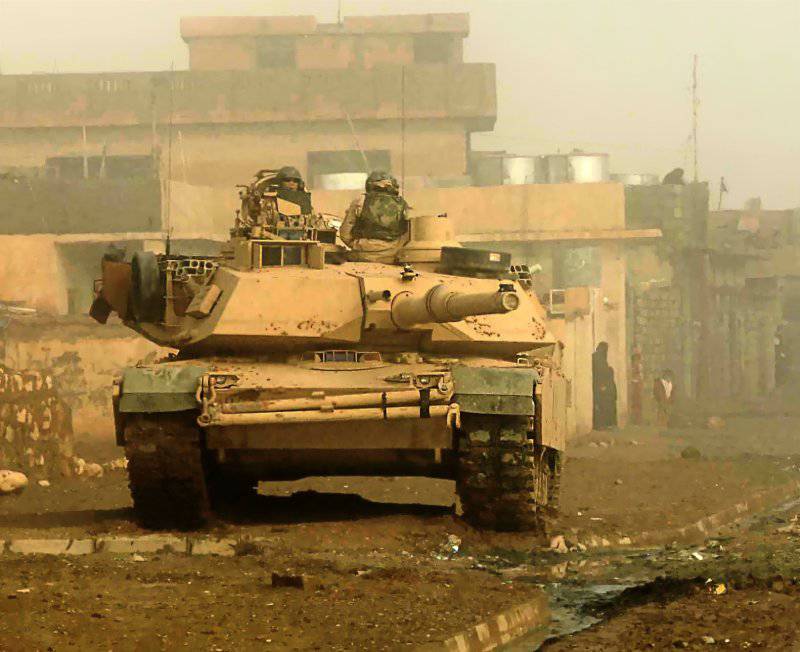
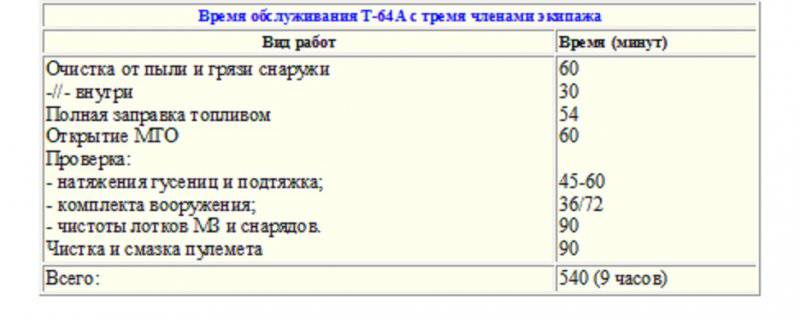
Information